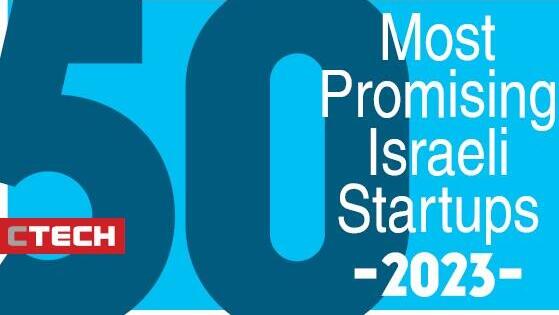
Opinion
After a challenging 2022, what will 2023 hold for the technology industry?
“Our base case scenario envisions a high probability of consumer recession between the second half of 2022 and the first half of 2023. We believe we need to wait for the second half of 2023 for stability across different end-markets,” writes Gerry Livnat, Managing Director of Rothschild & Co's Wealth Management Representative Office in Israel
The war in Ukraine, the ongoing Covid-19 crisis in different parts of the world, the trade war intensifying between China and the U.S., and increased inflation – the past year had no shortage of challenges. So much so that this past earnings season is likely to be remembered as one of the most volatile seasons the technology industry witnessed in the last decade.
Big questions remain around the future of the technology industry. Will the collapse of stocks in 2022 continue in 2023? Will the industry continue to witness layoffs and reductions in company value? If and how will the industry change direction? Is this a good time to invest in technology stocks?
General trends to watch out for – from an investor’s perspective
Initially, the Covid-19 pandemic increased the focus on tech, bringing unusually strong demand and over-investing in 2021. But the global macro-environment changed in 2022 and led companies to make idiosyncratic decisions in order to align investments – including headcount, capex, product development etc. – against a slower, more mature revenue growth profile. We now expect a soft first half to 2023 with more job cuts, followed by a mild recovery in the second half.
In 2022, the stocks of mega cap companies underperformed the broader market, moving only in 10-20% increments. In 2023, we’ll continue to focus our attention on scaled players with a proven track record, or those that can either be valued on earnings, cash flow and/or favorable profit narratives. We view Alphabet and Microsoft as highly cash generative and shareholder oriented.
All that said, Alphabet has been challenged by one of its largest investors. In our view, management must provide clarity around their 2023 strategy as soon as possible. When we look at Amazon and Meta, we see that their narratives around investments and margin dynamics were revised by subsequent company announcements on workforce reductions. These are all to watch out for in the next earnings season.
When it comes to risk factors, we recommend monitoring the following: (1) a change in enterprise and consumer spending trends that can impact operating estimates, (2) regulatory developments that can impact P&L and inorganic growth via M&A, especially for big names, (3) rising competition in some verticals e.g., digital advertising.
Our base case scenario envisions a high probability of consumer recession between the second half of 2022 and the first half of 2023. We believe we need to wait for the second half of 2023 for stability across different end-markets.
Global technology sub-sector trends to keep an eye on
Digital advertising – demonstrates a slowdown given macroeconomic headwinds, increased competition, industry maturation, and Apple privacy changes. Four themes stand out from early Q4 2022: (1) visibility into the operating environment remains low; (2) competition for user time remains intense, especially in short-form videos, Reels (Meta) and YouTube Shorts (Alphabet); (3) new mediums could intensify competition in 2023 against an uncertain backdrop; and (4) resilient consumer behavior in the U.S. versus weakness in Europe. Overall, the industry is likely to continue in the same direction in the first half of 2023; it can resume solid growth only if the environment normalizes.
eCommerce – features resilient performance by scaled players, as both consumers and merchants find increasing value in aggregators. The divergence in spending trends between the lower-end and higher-end consumers is likely to continue, as well as the extensive cost rationalization and curtailing of non-growth initiatives by sellers. Third quarter results and early October numbers indicate a weak Europe.
Online travel, local commerce & food delivery – short-term trends remain elevated (especially in the U.S.). Recent management commentary has been counter-narrative to investor fears. If consumer behavior softens in the first half of 2023, we expect a healthy investor debate on demand trends i.e., units and pricing.
The Israeli technology industry today and tomorrow
2021 was a record-breaking year for Israeli startups in terms of raising capital (almost $25 billion). In 2022, while we saw depreciation of value in the Israeli stocks listed on Nasdaq and lower valuations of high-tech companies, the abovementioned funding will continue to be used by startups to develop solutions. These funds will allow startups to follow through on strategy; as such, new developments are likely to come at a growing pace. We expect cybersecurity, automotive, health-tech and fintech to grow significantly in 2023.
In 2022, VC funding rounds in Israel slowed down while early-stage funding rounds rose. This trend mimicked the rest of the world as VC's are more cautious in uncertain times. While we expect this trend to continue into 2023, we also believe in Israel’s case funding rounds might reach their previous heights already in 2024.
Israeli high-tech has become a mature market with more and more startups scaling up to be global players. In addition, the Israeli government is targeting an increase of 10% to 15% in this sector through different incentives. Regardless of the current downturn, this sector is likely to grow in the next few years and continue to be a pillar in the country’s economy.
Gerry Livnat, Managing Director of Rothschild & Co's Wealth Management Representative Office in Israel















